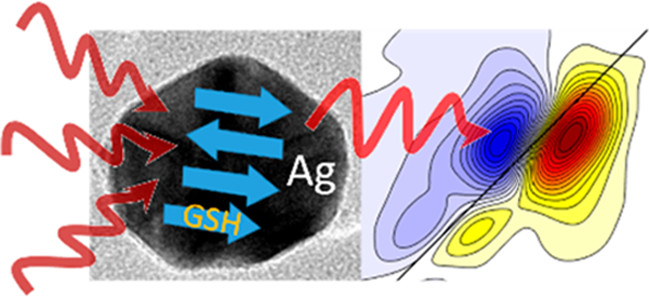The conformation of molecules, peptides, and proteins, self-assembled into structured monolayers on the surface of metal nanoparticles (NPs), can strongly affect their properties and use in chemical or nanobiomedical applications. Elucidating molecular conformations on the NP surface is highly challenging, and the microscopic details mostly remain elusive. Using polarization-selective third-order two-dimensional ultrafast infrared spectroscopy, we revealed the highly ordered intermolecular structure of γ-tripeptide glutathione on the surface of silver NPs in aqueous solution. Glutathione is an antioxidant thiol abundant in living cells; it is extensively used in NP chemistry and related research. We identified conditions where the interaction of glutathione with the NP surface facilitates formation of a β-sheet-like structure enclosing the NPs. A spectroscopic signature associated with the assembly of β-sheets into an amyloid fibril-like structure was also observed. Remarkably, the interaction with the metal surface promotes formation of a fibril-like structure by a small peptide involving only two amino acids.
Authors: Anup Ghosh, Amit Kumar Prasad, Lev Chuntonov
Publication date: 2019/5/2
Journal: The journal of physical chemistry letters
Publisher: American Chemical Society



